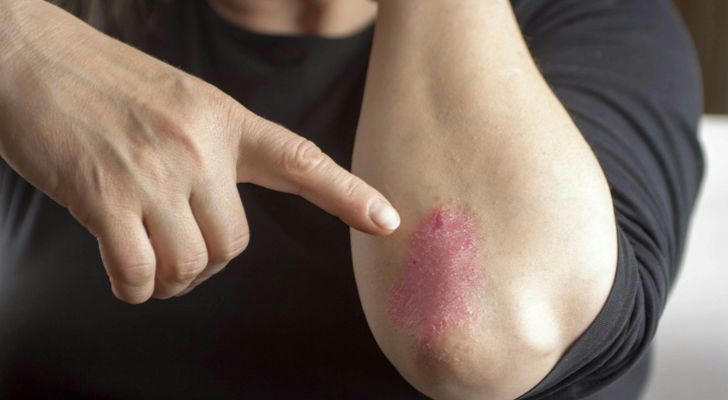Understanding Psoriatic Arthritis: Symptoms, Areas Affected, Lifestyle, and New Treatment Approaches
Psoriatic arthritis hurts joints and can cause swelling. It’s linked to skin issues like psoriasis. The pain may vary, and it can lead to joint harm. Early care, meds, and therapy help ease the pain and slow harm.

Recognizing the Symptoms of Psoriatic Arthritis
Psoriatic arthritis (PsA) is a complex condition that combines symptoms of arthritis with the presence of psoriasis, a skin disease known for red, scaly patches. The joint pain associated with PsA can range from mild to severe and may come and go in flares. Common early signs include joint stiffness, swelling, and tenderness, especially in the fingers and toes. These symptoms often develop gradually, making early diagnosis crucial for preventing long-term joint damage.
Some of the hallmark symptoms include:
- Swollen fingers or toes that may resemble sausages (dactylitis)
- Morning stiffness lasting more than 30 minutes
- Changes in fingernails or toenails, such as pitting or separation from the nail bed
- Fatigue and reduced range of motion
Because symptoms can mimic other forms of arthritis, such as rheumatoid arthritis or osteoarthritis, individuals are encouraged to consult with a rheumatologist if they have persistent joint pain, especially in the context of psoriasis.
Where Psoriatic Arthritis Commonly Affects the Body
Psoriatic arthritis does not affect every person in the same way. It can impact various joints and areas of the body. Some types of PsA are more localized, while others have a more widespread effect. Understanding where PsA tends to strike can help patients monitor their symptoms more effectively.
Common locations include:
- Fingers and toes: Often accompanied by swelling and stiffness
- Spine and lower back: Known as axial PsA, this can cause pain and stiffness in the back or neck
- Wrists, knees, and ankles: These larger joints may also become inflamed
- Entheses (where tendons and ligaments attach to bone): This inflammation is known as enthesitis and is a distinctive feature of PsA
In some people, the disease affects only one side of the body or a few joints, while in others, it can be symmetrical and widespread. The variability of affected areas highlights the importance of individualized treatment plans.
Managing Psoriatic Arthritis Through Lifestyle Choices
Living with psoriatic arthritis involves more than just medication. Lifestyle changes can make a significant difference in managing symptoms and improving quality of life. A holistic approach includes diet, physical activity, stress management, and regular monitoring of symptoms.
Effective lifestyle strategies include:
- Engaging in low-impact exercises like swimming or yoga to keep joints flexible
- Maintaining a healthy weight to reduce stress on joints
- Eating an anti-inflammatory diet, rich in fruits, vegetables, and whole grains
- Avoiding smoking and limiting alcohol intake
- Practicing stress-reduction techniques such as mindfulness or meditation
It’s also important to keep open communication with healthcare providers to adjust treatment plans as needed and to stay informed about new developments in managing PsA.
Innovations in Treatment for Psoriatic Arthritis
Medical advancements have significantly improved the outlook for individuals with psoriatic arthritis. In recent years, a range of treatment options has become available, offering targeted and more effective symptom control. These innovations aim to reduce inflammation, relieve pain, and slow the progression of joint damage.
Key treatment categories include:
- Nonsteroidal anti-inflammatory drugs (NSAIDs) for symptom relief
- Disease-modifying antirheumatic drugs (DMARDs) to slow disease progression
- Biologic therapies that target specific parts of the immune system
- Targeted synthetic DMARDs that interfere with specific enzymes involved in the inflammatory process
Advancements in biologic medications have been especially impactful. These therapies have helped many patients achieve better symptom control with fewer side effects compared to traditional treatments. However, responses can vary, and treatment must be tailored to each individual’s needs and medical history.
Working With Healthcare Providers for Effective Management
Managing psoriatic arthritis effectively requires a coordinated effort between patients and their healthcare teams. Rheumatologists, dermatologists, physical therapists, and other specialists may all play a role in care. Regular check-ups and open discussions about symptoms and side effects are essential for optimizing treatment strategies.
Patients are encouraged to:
- Track symptoms using a journal or app to identify patterns or triggers
- Ask questions and stay informed about treatment options
- Report any new symptoms or medication side effects promptly
- Stay consistent with both medication and lifestyle management plans
By being proactive and involved in their care, individuals with PsA can better manage the condition and maintain a higher quality of life. Education, support groups, and patient advocacy resources also offer valuable tools for navigating life with psoriatic arthritis.
Conclusion: Empowering Individuals Living With Psoriatic Arthritis
Psoriatic arthritis presents unique challenges, but with early recognition, tailored treatment, and supportive lifestyle changes, many people can live full, active lives. Understanding the symptoms and affected areas, adopting a proactive mindset, and staying informed about medical advancements can empower individuals to take control of their condition. Consistent care and open communication with healthcare professionals remain key to managing psoriatic arthritis effectively over the long term.
